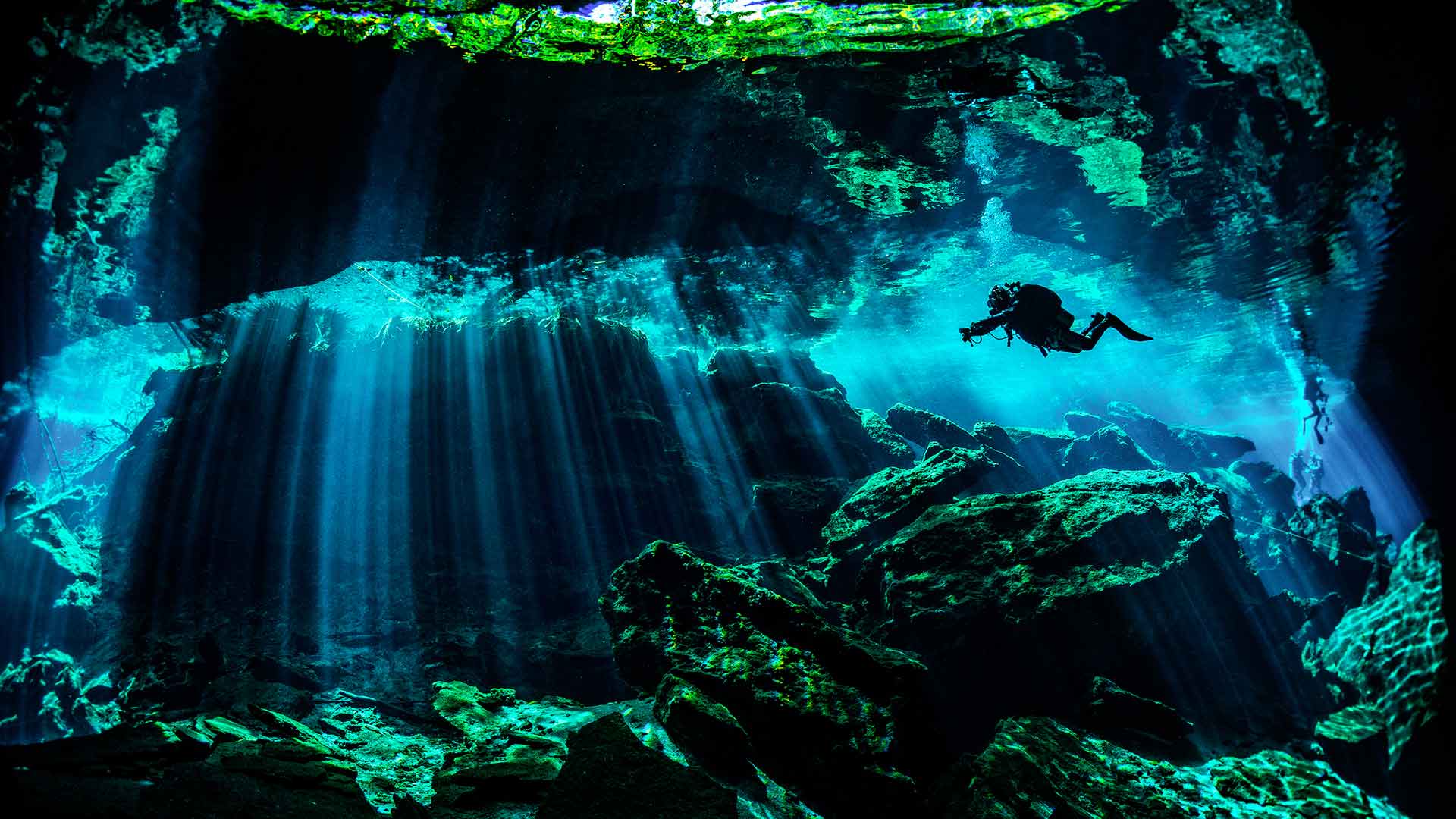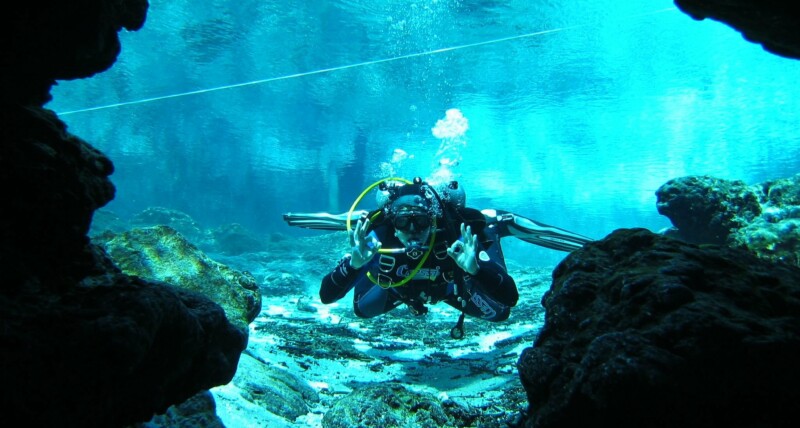
Cavern diving is the exploration of permanent, naturally occurring overhead environments while remaining within sight of their entrances. It differs from cave diving in that, while cave divers may penetrate thousands of yards, cavern divers generally go no further than 130 feet from the surface. Additionally, cavern divers keep the entrance clearly in sight at all times, and use a guideline so that, should sight of the entrance be accidentally lost, divers can immediately regain it.
By taking these steps, cavern divers remain able to make emergency swimming ascents and, thus, restore the safety margin they enjoy in open water. Properly trained and equipped wreck and ice divers who wish to remain within recreational diving limits take similar steps to ensure they maintain a comparable safety margin when entering their unique overhead environments.
Because cavern divers remain within the controlled emergency-swimming ascent zone, while cave divers go far beyond it, there are several other significant differences between cavern and cave diving.
Cavern diving is, by definition, a form of recreational diving. This means, among other things, that divers can obtain recreational-level Specialty Diver certifications in cavern diving from open-water training agencies such as CMAS, NAUI, PADI, SDI and SSI.
In contrast, experts consider cave diving a form of technical diving. As such, the various levels of Cave Diver certification are available only through cave diving organizations, such as the National Speleological Society Cave Diving Section (NSS-CDS) and the National Association for Cave Diving (NACD), and technical diving organizations, such as GUE, IANTD, NAUI Tech and TDI.
Because the risks that cavern divers must manage are not significantly greater than they experience in open water, cavern divers are able to use much the same equipment as they use in open water. Being in underwater caverns requires that divers make a few modifications to their equipment; however, most divers say that these modifications make their open-water diving easier and more enjoyable. Cave divers, on the other hand, use highly specialized equipment to reduce the risks they encounter to an acceptable level.
One such example is gas-delivery systems. Cavern divers use single tanks with K-valves and a single regulator first stage. Cave divers — whether using double or single tanks — use systems in which a single gas supply feeds two separate on/off valves and regulator first stages. Should a valve-to-regulator O-ring rupture or a regulator begin free flowing, cave divers can shut off the offending regulator/valve combination and exit using the remaining regulator and valve.
Because cavern diving is still a form of recreational scuba, with modest risk factors, it is an activity that a number of experienced recreational divers can learn and enjoy. Cave diving, in contrast, is for a far more select group of individuals. Cave divers should possess near-instructor-quality buoyancy control and general diving skills. They should be utterly committed to diving in a highly disciplined and methodical manner and have an above-average understanding of the technical aspects of diving.



